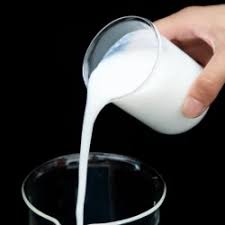Silicone Emulsions
Description:
Silicones, semiorganic polymers composed of silicon atoms interspersed with oxygen atoms and methyl groups attached to the silicon atoms, exhibit a basic polymer structure known as polydimethylsiloxane. The manipulation of this structure through the substitution of organic groups or cross-linking of polymer chains allows for the creation of polymers with unique and desirable properties.
Silicone polymers or oils boast several advantageous characteristics:
- They demonstrate resilience to high and low temperatures, with minimal changes in viscosity and shear properties.
- The polymers exhibit thermal oxidative stability.
- Silicone oils possess remarkably low surface tension.
- Surfaces coated with these polymers typically experience low adherence.
- Silicone emulsions contribute to water repellency in coatings.
- They offer high dielectric strength, making them suitable for electrical applications.
- Many silicone oils are considered physiologically inert.
Due to these significant physical attributes, silicone oils find application in various emulsions, including silicone antifoams, mold release agents, cosmetics, and textile emulsions. Manufacturers often enumerate numerous applications, ranging from food and chemical processing to petrochemicals, wastewater treatment, paper/printing, adhesives/coatings, and textiles.
Applications:
-
Antifoam:
- Used to control or eliminate foaming in diverse products and processes.
- Silicone oils are chosen for antifoams due to their effectiveness across a broad range of operating conditions.
- Effective antifoams exhibit low solubility and a positive spreading coefficient.
- Antifoams often contain hydrophobic filler particles, like fumed silica, to aid in foam reduction.
- Typically effective at concentrations ranging from 10 to 200 ppm.
-
Textile Emulsions:
- Utilized in textile applications to impart desirable properties such as durable water repellency, stain resistance, sewability, tear resistance, improved wrinkle recovery, and shrinkage resistance.
- The emulsion usually contains 25% to 75% oil and should be stable in storage for six months.
- Average droplet diameter in this type of emulsion is usually less than one micrometer.
-
Mold Release Agents:
- Sprayed into molds to facilitate the release of formed objects.
- Employed in tire molding, rubber and plastic molding, and the production of medical appliances.
Formulation Considerations:
- Tailored to achieve emulsions with characteristics suitable for specific applications.
- Different emulsifiers may be employed, with nonionics being the most common.
- pH adjustment to 5-7 may be necessary to minimize hydrogen gassing.
- Viscosity can vary from 100 cSt to 100,000 cSt (25°C).
- Emulsions should possess good shelf life, exhibit little or no separation, and be compatible with the intended process or product.
 TopWin is one of the leading & professional manufacturers with more than 20 years of experience and has domestic top-level engineers in the silicone surfactant industry. We specialize in producing all kinds of silicone-based new materials and in research, production, sales, and marketing of silicone-based performance materials. Our products are mainly used in polyurethane foam, Agriculture, Coatings and Inks, Leather & Textiles, Film and Paper, Cosmetic industry, etc.
TopWin is one of the leading & professional manufacturers with more than 20 years of experience and has domestic top-level engineers in the silicone surfactant industry. We specialize in producing all kinds of silicone-based new materials and in research, production, sales, and marketing of silicone-based performance materials. Our products are mainly used in polyurethane foam, Agriculture, Coatings and Inks, Leather & Textiles, Film and Paper, Cosmetic industry, etc.